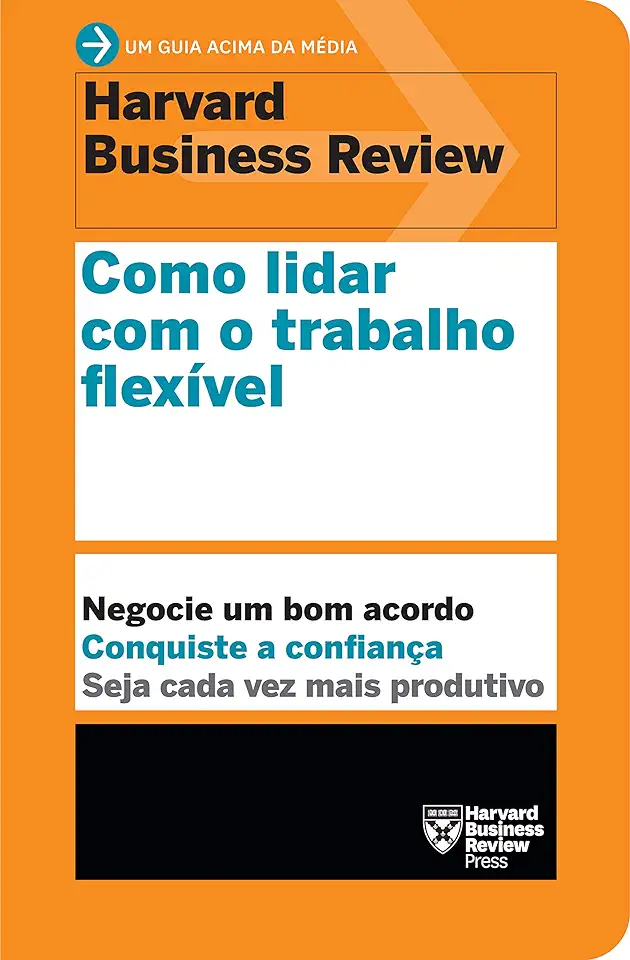
How to Deal with Flexible Work - Harvard Business Review
How to Deal with Flexible Work: The Essential Guide to Managing Remote Teams and Creating a Successful Hybrid Workplace
In today's rapidly changing business landscape, flexible work arrangements have become the norm. With the rise of remote work and the increasing demand for work-life balance, organizations must adapt to these new challenges to remain competitive and successful.
In this comprehensive guide, "How to Deal with Flexible Work," the experts at Harvard Business Review provide invaluable insights and practical strategies for managing remote teams and creating a thriving hybrid workplace. Drawing from extensive research and real-world case studies, this book offers a roadmap for leaders and managers to navigate the complexities of flexible work and unlock its full potential.
Key Benefits of Flexible Work
Flexible work arrangements offer numerous benefits for both employees and organizations. By embracing flexible work, businesses can:
Attract and retain top talent: Employees value the flexibility to work from anywhere, which can give organizations a competitive edge in recruiting and retaining the best talent.
Increase productivity and innovation: Flexible work arrangements can lead to increased productivity and innovation, as employees have more control over their work schedules and environments.
Reduce costs: By reducing the need for physical office space, organizations can save on overhead costs and reallocate resources to other areas.
Enhance employee well-being: Flexible work arrangements can improve employee well-being by reducing stress, improving work-life balance, and fostering a healthier work environment.
Challenges of Flexible Work
While flexible work offers many benefits, it also presents several challenges that organizations must address. These challenges include:
Communication and collaboration: Ensuring effective communication and collaboration among remote team members can be challenging, especially when team members are located in different time zones or have different work schedules.
Managing performance: Evaluating and managing the performance of remote employees can be more complex than managing on-site employees, as managers may have less visibility into their daily activities.
Maintaining company culture: Preserving and fostering a strong company culture can be challenging when employees are not physically present in the office.
Ensuring cybersecurity: Remote work can increase the risk of cybersecurity breaches, as employees may be accessing company data from unsecured networks.
Strategies for Successful Flexible Work
To overcome the challenges of flexible work and reap its full benefits, organizations must implement effective strategies. This book provides a wealth of practical advice, including:
Establishing clear policies and guidelines: Organizations should develop clear policies and guidelines for flexible work arrangements, covering issues such as work hours, communication expectations, and performance evaluation.
Investing in technology: Investing in the right technology can facilitate effective communication, collaboration, and project management among remote team members.
Fostering a culture of trust and accountability: Building trust and accountability among remote employees is essential for successful flexible work arrangements. Managers should set clear expectations and provide regular feedback to ensure that employees are meeting their responsibilities.
Providing training and support: Organizations should provide training and support to help employees adapt to flexible work arrangements and develop the skills they need to succeed in this new work environment.
Creating a Thriving Hybrid Workplace
In addition to managing remote teams, organizations must also create a thriving hybrid workplace that accommodates both on-site and remote employees. This book offers guidance on:
Designing a flexible workspace: Creating a flexible workspace that supports different work styles and preferences can enhance employee productivity and satisfaction.
Encouraging collaboration and community: Fostering a sense of community and collaboration among on-site and remote employees is crucial for maintaining a positive work culture.
Supporting employee well-being: Organizations should prioritize employee well-being by providing resources and support to help employees manage stress, maintain work-life balance, and stay healthy.
Conclusion
"How to Deal with Flexible Work" is an essential resource for leaders and managers who want to successfully navigate the challenges and opportunities of flexible work. By implementing the strategies outlined in this book, organizations can create a thriving hybrid workplace that attracts and retains top talent, boosts productivity and innovation, and enhances employee well-being.
Don't miss out on this opportunity to transform your organization's approach to flexible work. Order your copy of "How to Deal with Flexible Work" today and start reaping the benefits of a successful hybrid workplace!
Enjoyed the summary? Discover all the details and take your reading to the next level — [click here to view the book on Amazon!]